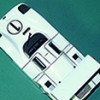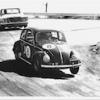
SCA/Formula 2 Petrol Injection
#1

Posted 15 December 2015 - 15:59
Cheers,
Leo
Advertisement
#2

Posted 15 December 2015 - 16:47
Not really my area of of knowledge, but…
this SCA rebuild diary here
http://www.lotus7.co...SWORTH_SCA.html
suggests '66 for the application of injection...
although it's not entirely clear, from the way it's written, whether the writer is referring to SCA or the enlarged SCC variant.
However, formula2.net shows results for races in 1966 in which SCA-equipped runners are listed as retirements due to (issues with) fuel injection.
So, seemingly used in 1966. A trawl of other reports or results might indicate if other motors were injected before that. As to whether it was actually permitted before that… I couldn't quickly find the engine regs. I do have a few FIA Yellow Books from around that era - I'll dig them out if someone more knowledgeable doesn't pop up beforehand!
Edited by 2F-001, 15 December 2015 - 16:50.
#3

Posted 15 December 2015 - 17:54
I'm putting together a Cosworth MK 17 for my Cooper F2 car. I got a screaming deal on the head...since its waaaayyyy cheaper than an SCA. The carbs on the SCA are Weber DCMs, totally unaffordable. Lucas period fuel injection is not so crazy.
So is it historically reasonable to inject the MK 17 for the 1 liter Formula 2 (1964-1966)spec.
Cheers,
Leo
#4

Posted 15 December 2015 - 18:35
Cosworth tried an injected SCA briefly early in 1965 but i don't think it raced. In 1966 most, if not all, the front runners had injection. The BRM and Honda F2 engines always had fuel injection.
The 1964 Cosworth engines had DCM Webers but they didn't operate well then the car was cornering. For 1965, Cosworth used IDFs which cured the cornering problem but were slightly down on power when compared with the DCMs. Most teams switched back to DCMs.
The Mk 17 was, I think, a modified version of the last Junior engine with downdraft carburettors. Very few were made. I don't know whether any used fuel injection but it would seem unlikely.
#5

Posted 15 December 2015 - 19:03
Here is a pic of my MK 17. Note the DCM adapter on the intake manifold.

Cheers,
Leo
Edited by Snakedriver, 15 December 2015 - 19:12.
#6

Posted 15 December 2015 - 19:13
Leo
#7

Posted 15 December 2015 - 19:35
I should have waited until someone with real knowledge showed up…!
Still, I've learned something.
#8

Posted 15 December 2015 - 23:03
I had a Lotus 44 with fuel injection a long while ago. First the head is different at the rear to take the injection pump. The camshaft was modified to take a quill shaft to drive the pump. I was fortunate that John Fenning had a spare set of inlet manifolds as these were missing. I was also helped by Cosworth with drawings of the bits that were missing including the injection pump metering cam. I don't think I would have the fortitude to do it all over again. A massive job. Incidentally Robs Lamplough has an injected engine in his Lola. I only realised recently that Cosworth made 2 different type of injected heads with different inlet ports.
#9

Posted 16 December 2015 - 06:00
I'm assuming that your referring to an SCA?
Leo
#10

Posted 16 December 2015 - 06:37
Yes. SCA
#11

Posted 16 December 2015 - 21:08
I'm not at all aware of the price for DCMs but I can't believe it would be a more costly option than the Lucas injection system. From personal experience with an SCC in the mid-70s, just a Lucas metering unit cost in the neighborhood of US $1,300.
#12

Posted 16 December 2015 - 21:18
Leo
#13

Posted 16 December 2015 - 21:47
And after-market Weber jets can be cheaper, but not always as good. ![]()
#14

Posted 16 December 2015 - 22:14
At this length of time I feel carbs are the way to go. Far simpler to set up and maintain than injection. And old Lucas injection in particular is less than reliable.
From what I have read above the IDFs were used period and I suspect would be easier to find. For historic racing reliability and driveability is No 1. It seems the DCMs suffer fuel surge, never good. Something that often is problem with Webers. Fuel pressure and float levels are very important.
As for jets, I bought 6 Weber DCOE jets recently for $60. Expensive but hardly huge.
#15

Posted 17 December 2015 - 02:36
I have an electronic copy of the Service Manual (such as it is) for the Lucas Petrol Injection System.
I can send you a copy if you PM me with your email. It is an 8 Meg file.
If I had such a system available to me today, I think that I would have the rotor and the shuttle piston DLC coated to improve the robustness and durability of it relative to the 1960's OEM product.
In my view it was a very good system, assuming that you profile the cam to match the characteristics of your engine. . .
PJGD
#16

Posted 17 December 2015 - 08:37
I PMd you.
Cheers,
Leo
#17

Posted 20 December 2015 - 20:59
Leo
As I said, I know absolutely nothing about Weber DCMs. And ,when I spoke of the cost of a Lucas metering unit being $1,300, that was for a used unit in mid-'70s dollars. Kinsler today offers a four-cylinder Lucas mechanical system that includes metering unit along with all the pumps (electric low and high pressure, mechanical high pressure.) The last price I saw was $7,500. That does not include the manifolds. Plus there are the necessary add-ons of filters, sump can, linkages, etc. A greater additional expense I see in your case would come in how you would drive the system. The MK 17 you show in your post appears to be a push-rod head. As I'm sure you're aware the SCA/SCC engines drove the injection from the rear of the overhead cam. The cost of DCMs would have to be extreme in order to justify a switch to injection.
#18

Posted 21 December 2015 - 12:41
My Lotus 44; https://www.dropbox....j1/SCA.pdf?dl=0 I hope you can open the picture.
My previous post. You will need a fuel injected head. They are different to a carburettor head. Apart from the head you will require. a quill shaft that fits inside the camshaft, A damper, an adjuster to alter the pump timing, a pump with a slot drive (not spline) adapter plate for pump, pump cam, manifolds, trumpets (I had to make mine-metal spin), different water manifold, correct throttle linkage (very important as the throttle slide to pump ratio will be wrong), alternator and housing. These are just the basic requirements.
Fit carburettors it will be easier and cheaper. If you can't find DCM's maybe you could fit another type of downdraught Webber.
Best of luck. Keep us informed.
#19

Posted 21 December 2015 - 21:32
That's a nice looking SCA. Alas, I'm trying to get the lowly MK17 up to the task. As I explore options, I'm fascinated by PI. I have a set of DCNFs that most likely will go on the car, but going to run the PI out and see where I can go with it.
What was the difference in the head on the SCA? Was it the front and back to accommodate the PI? Surly there wasn't a difference in the actual intake manifolds?
Cheers,
Leo
Advertisement
#20

Posted 21 December 2015 - 21:44
Leo
As I said, I know absolutely nothing about Weber DCMs. And ,when I spoke of the cost of a Lucas metering unit being $1,300, that was for a used unit in mid-'70s dollars. Kinsler today offers a four-cylinder Lucas mechanical system that includes metering unit along with all the pumps (electric low and high pressure, mechanical high pressure.) The last price I saw was $7,500. That does not include the manifolds. Plus there are the necessary add-ons of filters, sump can, linkages, etc. A greater additional expense I see in your case would come in how you would drive the system. The MK 17 you show in your post appears to be a push-rod head. As I'm sure you're aware the SCA/SCC engines drove the injection from the rear of the overhead cam. The cost of DCMs would have to be extreme in order to justify a switch to injection.
I agree with those prices.
THOUGH using the modern version which I am sure is 100% better than the prehistoric Lucas is just that,, it is modern. On a historic car.
It appears that a different head was used. To me hardly a real problem, plenty of people used belt driven pumps in period.
But by the time it is all set up it is still an ancient piece. And near certain a lot less reliable.
Modern internals these days probably offsets any purported power loss anyway.
While the only Weber I know is a DCOE many smart people over the years have mostly solved fuel surge in most Weber models by various means. Do plenty of research though before buying some.
An IDA would be my choice and I know many use them with success on open wheelers, dirt track and off road.
Most problems though with Webers will alwayd be too much [or little] fuel pressure and volume and needle and seat settings and sizes and float weights. A heavy float bounces more and also takes up too much bowel volume too. Coupled with too big [or small] needle and seat can and will cause heaps of problems. I know Weber them selves have came up with a lot of these fixes.
This too is applicable to most carbs used in motorsport.
EFI when working properly [a lot does not!] resolves most of the problems and stops fuel surge etc too normally. Fuel surge and bounce though still can be a problem with the tanks and return lines. applicable to carb problems too ofcourse. Blame the carbs etc when the fuel is sloshing around the tank crazily and not being picked up.
#21

Posted 21 December 2015 - 22:05
Leo

Edited by Snakedriver, 21 December 2015 - 22:10.
#22

Posted 21 December 2015 - 22:41
Leo, It was the back of the head to take the injection pump. I forgot the cam cove was different too. There was a provision for part of the throttle linkage.
#23

Posted 22 December 2015 - 03:44
Cheers,
Leo
#24

Posted 22 December 2015 - 18:41
Slightly off-topic: I've been noticing what to me is an incorrect term or, more accurately, the incorrect identification of a component for the systems discussed here and elsewhere. "Fuel injection pump." It seems that many times this term is used when what's actually being discussed is the metering unit. For the Lucas-type system being discussed here, there are three pumps: electrical low-pressure, electrical high-pressure ("start-up") and mechanical high-pressure (almost always belt-driven.) These three pumps all supply fuel under pressure to the metering unit which decides which cylinder gets fuel when. The metering unit "pumps" nothing, it provides no pressure. As Lee rightly says, there were belt-driven pumps in use. I'm guessing he really means metering units. That was the case for the injected Cosworth BD engine I used post-SCC. There was a cog-belt drive off the front of the engine to a flexible shaft that connected to the metering unit atop the head. I've also seen metering units that took there drive, via a belt, from the back of the BD cams.














